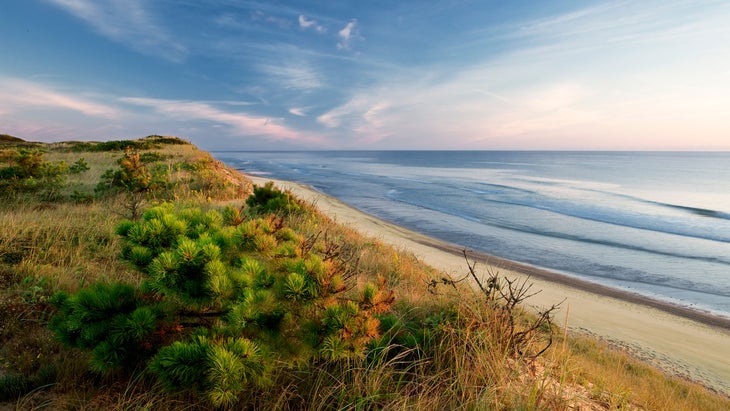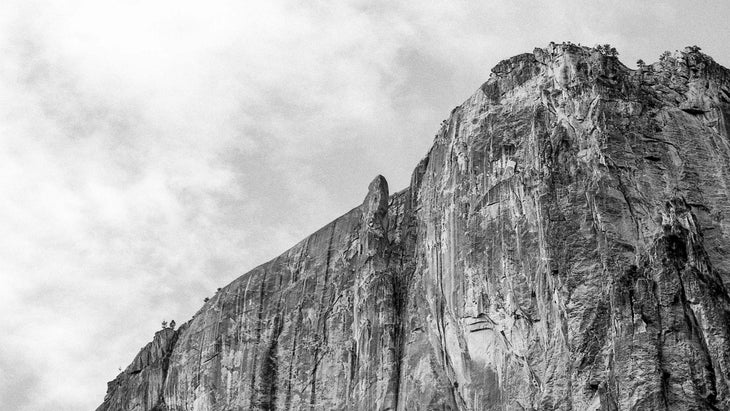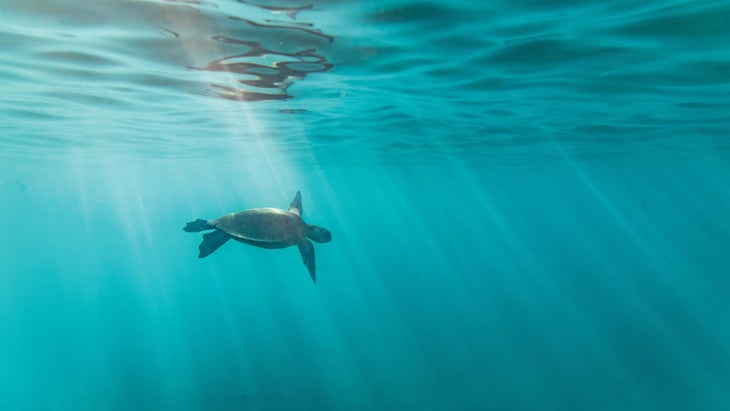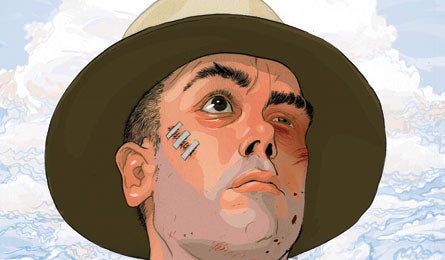Products You May Like
What hiker hasn’t dreamed of being a National Park Ranger? It’s the primo job in the outdoors, right? You patrol the country’s most spectacular wilderness preserves, become a backcountry hero (with government benefits!), and get to wear that iconic hat. But what really happens when you put on a smokey the bear stetson?
For 12 years, I wore the uniform: I performed law enforcement, fire fighting, and search and rescue at parks like Zion, Yosemite, Cape Hatteras, and the Grand Canyon. I directed traffic around tarantula jams. I pursued bad guys while galloping on horseback. I jumped into rescue helicopters bound for the depths of the Grand Canyon. I won arguments with bears. I dodged lightning bolts. I pissed on wildfires. I slept with rattlesnakes. I also saved endangered turtles, helped hikers get home, and saw a lifetime’s worth of sunsets.
It really was the best job in the world.
It was also one of the most dangerous. From 2000 to 2010, a national park ranger was more likely to be assaulted in the line of duty than any other federal officer, including those who work for the U.S. Bureau of Alcohol, Tobacco, Firearms and Explosives, the Secret Service, and the Drug Enforcement Agency. Add fatal accidents involving natural disasters and plane crashes, and a park ranger is up to 12 times more likely to die on the job than a special agent for the FBI. In light of these numbers, reported each year in Department of Justice statistics, park rangers have been described—like grizzly bears, wild orchids, and sea turtles—as endangered.
Which means there may just be an opening for you. Still interested? Here’s what to expect.
You Will Be Insulted

First-year ranger Chris Fors caught and cuffed the pervert before the would-be victim even saw him. When the sunbather figured out what had nearly happened, she ran up to her saviour and said, “Thank you, trooper!”
Standing next to the bikini-clad lady, Chris felt great, like a hero. Still, did she have to call him a trooper? Couldn’t she see the patches on his ball cap and on his sleeve, the brown arrowhead-shaped fabric with the bison and the sequoia tree and the snowcapped mountains under the words “National Park Service”? He wasn’t a trooper. He wasn’t a police officer, and he wasn’t a forest ranger, either. He was a national park ranger. If she was going to call him a hero, was it too much to ask that she give credit where credit was due?
“I’m a park ranger, ma’am.”
“Oh, yeah, right. Ranger, trooper, whatever,” she said. “Thank God you showed up when you did!”
After a week of saving topless damsels from molesters and protecting nesting plovers from ignorant brutes, Chris and a few other Cape Cod rangers decided to get some downtime at a local bar. But once the rangers entered the club, it was obvious they were not welcome by some of the locals.
“Here come the pine pigs,” murmured someone at the end of the bar. Then the lead singer of the Provincetown Jug Band, a town favorite, grabbed the microphone and announced the arrival of the “Tits and Ass Plover Patrol.” Laughter filled the dark room. Chris smiled and tipped his beer bottle to the band. It was funny. Still, he wished they would hurry up and start singing the next song.
For the rest of the summer, Chris continued to steer tourists away from nudists, off-road vehicles away from plover nests, and perverts away from everybody. And he continued to be mocked for doing his job diligently. By the end of his first season, the newbie ranger began to feel a peculiar pull. Yellowstone. Yosemite. The Grand Canyon. The big parks. The Crown Jewels. The parks with bigger animals to protect, bigger scenery to guard, and bigger bad guys to bust. The taunts and insults would seem tame.
Back then, 22-year-old Chris Fors couldn’t know that after living and working in an iconic park in Western North America, a park ranger might suffer from paranoia, anxiety attacks, and nightmares–gruesome dreams that would wake him up screaming and grasping at his sheets. Who would tell him?
You Will Laugh and Cry

Within minutes of receiving a report of a missing Czech climber, Mary Litell was in the park rescue helicopter, her eyes scanning Yosemite’s Lost Arrow Spire for clues. She spotted a pile of red and black rags lying on the rocks below and asked the pilot to move in closer. The winds were squirrelly that day, but he hovered as close to the granite as he dared, tilting the helicopter to give Mary a better look. The rotor wash shooed away a flock of crows that had been sitting on the pile of rags, revealing a human body. Leaning out of the helicopter door, the webbing of her seat belt the only thing keeping her from falling, she snapped a Polaroid of the scene.
Back at the rescue cache, Mary showed this photograph to me, the incident commander. (After two summers in Cape Hatteras and four years in Zion, I had transferred to Yosemite.) As I studied the photograph, Mary informed me that this climber must have fallen 800 feet several days earlier. Then she pointed to the snapshot of a tattered lump of clothing and decomposing flesh and observed, “I don’t think he’s going to make it.”
If you’re thinking people do not become park rangers to do coroner duty, you would be right. Nevertheless, the job must be done. The body recovery team rolled the gurney with the Czech climber’s remains into the morgue. Mary, meanwhile, went to Sunnyside Campground, where the climber’s girlfriend was waiting for someone from the NPS to contact her. Like most rangers, Mary would have rather juggled knives while attached to a flaming rope dangling over a mile-high cliff than do a death notification. This was going to be her first.
Mary walked up to the dead climber’s girlfriend. Surely the girlfriend suspected the worst, but until someone in uniform said it out loud, she was holding on to a glimmer of hope. Mary saw her words put out that glimmer in the girlfriend’s eyes. But it was the ranger, not the grieving girlfriend, who first broke down into tears.
Of course, there’s help for rangers after such encounters.While some are trained to be coroners, others are trained to be critical incident stress counselors. These ranger-therapists conduct critical incident stress debriefings (CISDs) and often function as NPS liaisons or counselors for families. Like coroner detail, certification as a grief sponge involves a couple of weeks of additional training and no additional pay. When CISD “peer counselors” lead group “stress debriefings,” you can talk about your feelings and cry if you want. But the rangers with the weather-beaten Stetsons don’t say much during these sessions. They appear to be able to walk it off, shrug it off, laugh it off, and forget it. I saw an example of this coping mechanism when I showed up for work the next morning. Tacked to the bulletin board in the briefing room was the photo Mary had taken from the helicopter. On the white border under this snapshot of a corpse at the base of the Lost Arrow Spire, written in black marker, were the words “Canceled Czech.”
You Will Be Proud

Less than one percent of all sea turtle eggs end up producing an adult. The turtle I held in my hand came from a nest of 81 eggs.
I was a few weeks into my first job as a seasonal park ranger at North Carolina’s Cape Hatteras National Seashore, and it was impossible not to contemplate the depressing odds this single turtle would have to overcome. Impossible not to think of the 80 that wouldn’t make it.
Still, I loved driving the beaches of the barrier islands, searching for sea turtle nests, and documenting their locations. It felt like Christmas morning the day I discovered several turtles fighting their way up the sandy banks of their nest. The baby loggerheads were dark violet, like little bruises.
The one I was holding now flapped its flippers on my skin. It tickled, like a child’s butterfly kiss. I marveled at its delicate touch—and the war zone it would have to survive to reach adulthood. Even if a turtle nest eludes the noses of raccoons and dodges the destruction of a hurricane, some eggs fail to hatch. Of the ones that do hatch, not all the turtles make it to the water. Ghost crabs snatch the hatchlings in their claws and drag them down into their holes. Gulls swoop in and pluck them off the beach.
Of the lucky ones that reach the ocean, not all will escape the sharks. There are gill nets to avoid, red tides and polluted water, poachers looking for shells for jewelry and meat for soup, and plastic bags and party balloons that float in the water like jellyfish, but, once eaten by a deceived turtle, lead to an agonizing death.
Holding this single turtle in my hands brought my decision about being a ranger into sharp focus. How could I not fight to keep this endangered species from becoming extinct? How could I not risk my life jumping from helicopters or fording rivers so that this baby turtle could someday return and lay its own eggs?
Retirement benefits? Health insurance? Decent housing? On my knees in the sand, with a baby turtle struggling for its life in the palm of my hand, I thought I had found the best–and most important–job in the world.
You Will Curse Obnoxious Tourists
Every first-time hiker in the Grand Canyon underestimates how hard, hot, and steep it is. Occasionally, hikers succumb to the exertion or the heat, collapse on the trail, and die. When this occurs during the peak hiking seasons, rangers must redirect hiker traffic around the body. Word travels. I’ve seen days when this morbid news infects backpackers with a unique hysteria. At their campsites they wring their hands with worry, and accost park rangers when they walk through a campground to check permits.
“Ranger, please! Anything for a helicopter ride to the top!”
“I’m sorry,” the ranger says. “Helicopter flights are dangerous and expensive. We use them only to rescue people with life-threatening medical conditions.” The next day, by the middle of the trek out, some hikers will offer substantial bribes to park rangers in return for a helicopter ride out of the canyon. Others issue threats: “I’m calling my congressman first and my lawyer second if you don’t fly me out of this canyon!” A few resort to trickery: “Ranger, you have to get me out of here,” the clever ones say while clutching their chests. “I feel the big one coming.” Some simply give up and just plop right down on the trail. “Ranger, I’ll never make it,” they moan. “So why prolong the misery? I’ll just die right here. Please tell my wife I love her.”
Park rangers call a hiker like this a “Code W.” A Code W is a wimp. There is nothing medically wrong with a Code W. He is only tired and sore. His spirit, not his body, is broken. A Code W does not consider the many real emergencies and depressing tragedies the ranger has dealt with that day.
The park ranger secretly loathes the Code W. The ranger has seen 80-year-olds, cancer survivors, and one-legged women hike out of the canyon without so much as a whimper. The Code W is the reason the ranger has not slept in 24 hours. He is the missed lunch, the romantic dinner date stood up, and the stack of paperwork that’s never finished.
Between the Code W’s and the real emergencies and the lack of sleep, who can blame a ranger for acting like an asshole once in a while? Like the day I started down the Bright Angel Trail to begin a nine-day tour at the Grand Canyon’s Phantom Ranch. That morning I had recovered the body of a local waitress who had slipped off the edge, nearly been saved, and then fallen hundreds of feet before rangers could rig a rescue line.
Hours later I was descending the tortuous switchbacks of the Devil’s Corkscrew when a fast hiker coming from the opposite direction waylaid me. “Hey, ranger,” the man said. “You got any Band-Aids? They aren’t for me. But I know some people up the trail who might want some.”
“Sorry,” I said cheerfully, “I’m all out of Band-Aids today.” This was irrational and lazy of me, I admit. Toss the guy some Band-Aids and be done with it. But I had slept less than two of the last 30 hours. Five hours earlier I had held a young woman’s brains in my gloved hands (you’re so thoughtful, my partner had said), and I had five additional hot miles of trail ahead of me. Digging through my backpack to hand out Band-Aids to a Code W was more than I felt capable of doing at that particular moment.
“You’re lying!” The man could tell I was blowing him off, and he was furious. “What is your problem, ranger? You can’t give a man a couple of Band-Aids? You know something? The American taxpayer pays you to hike all day,” he said, swinging his arms out over the scenery. “In fact, you should pay me for allowing you the privilege of working here!” I narrowed my eyes at the man. “You can have my job if you want it,” I said, “but you wouldn’t last two days.” Amazing how quickly an irate woman carrying a pistol can end a conversation.
You Will Be Haunted
There’s an insider’s tour of Yosemite National Park. And only park rangers know the points of interest. Places like the campsites favored by “The Swatter”—a habituated bear that had slapped so many tourists it had earned itself a nickname. The backcountry clearing where a ranger caught a pack of wannabe ninjas swinging around nunchucks. The waterfall where the unlucky swimmer went over the edge. The brink where a sad man leaped off a thousand-foot cliff. The restroom where some freak loaded human feces into the soap dispenser. The granite monolith where a woman fell from the sky.
That last one happened on a gorgeous Indian summer day. In the meadow below El Capitan, a crowd watched 58-year-old Jan Davis as she leaped off the Yosemite landmark, 3,500 feet above the valley floor. Davis and others were protesting a BASE-jumping ban—by jumping—and now she was twisting in the air, wiggling in an apparent attempt to reach her parachute chord.
“Yeah!” The protestors whistled and cheered as she approached 100 miles per hour. “Whoo-hoo! Go baby!” Another second went by. Then another.
Ranger Mary Litell-Hinson wasn’t cheering.
Five seconds had passed since Davis illegally BASE-jumped off El Capitan and the wind whipping at her clothes sounded like someone thumbing through a deck of cards, only louder. Much louder. It was a sound the ranger would never forget.
Twelve seconds. Chants changed from “Go baby go” to “Open, open, open.”
Thirteen seconds. Davis was falling at a rate approaching 120 miles per hour.
Fourteen seconds. Fifteen. Davis had her hands at her sides, putting her body in what skydivers call “the boxman position”–a belly-to-ground position ideal for free falling.
Sixteen seconds. Seventeen seconds. Davis rolled slightly to the left. Eighteen seconds. She covered her face with both hands. Nineteen seconds. The rangers and a gathering of more than 150 spectators heard what sounded like an explosion. The ground shuddered. There was a brief moment of silence before a car alarm went off. The irritating honks and wails pierced the air. A child began to cry.
Davis, knowing that her parachute would be confiscated after her illegal jump, had borrowed one that was dispensable. Unfortunately, the release mechanism was different than the one on her own chute, and she failed to discover that in time.
Mary ran to the ambulance and climbed into the back. She dug through the packs until she found the heavy-duty rubber gloves. As she approached the spot where Davis hit the ground, she knew the stops on the Yosemite ranger tour had just increased by one. But this was one place she’d never need to visit again.
You Will (Maybe) Fall in Love
My first night on the job in Yosemite, I rode with Ranger Kent Delbon. Well aware of Yosemite’s reputation for being hard on female rangers, I was nervous. But the tall, cleancut young ranger with the soothing voice put me at ease immediately. He conversed in Spanish with immigrant visitors, communicated in sign language with a deaf firefighter, and swerved to miss a chipmunk crossing the road. At the end of our shift, he zoomed into a hairpin turn, forcing me to push back on his shoulder to avoid landing in his lap. “That’s how I get close to my dates,” he said with a wink.
Inevitably, I fell for the tall ranger. Which is not to say all was “happily ever after.” Ranger couples have to contend with geographically challenging assignments (you’re in the Grand Canyon, he’s in Yosemite), natural disasters (simultaneous flash floods and lightning strikes), and anxiously monitoring the radio to hear if your partner has returned from the midnight rescue mission.
Even the best part of a ranger romance–going on a backcountry date–can cause trouble. Especially in an environment where physical bravado sometimes trumps brains. Once, when Kent came to visit me after I had transferred to the Grand Canyon, I talked him into attempting an 18-mile dayhike to a remote Hopi sacred site. In July. During a heat wave. I should have known better, of course. I knew firsthand what 112˚F temps could do to the un-acclimatized. “Trust me,” I said. “It’ll be fun.”
Kent had the grace not to remind me of those words when he was struck down by heat exhaustion, miles short of our destination. When we ran out of drinking water, he remained positive, even when he threw up his breakfast burrito and his cheeks turned as ruddy as the sandstone cliffs. By the time we reached a spring, he was on all fours, panting after gagging on bile.
Incredibly, our relationship survived that disastrous date. Maybe it made us stronger.
One bright spring day, Kent invited me for a stroll to the Canyon rim. A thousand feet below, the redbuds were blooming. I leaned as far as I dared over the cliff. Kent grabbed my shirt, pulled me back from the edge, and asked me to marry him.
Three months later, a judge in Seward, Alaska, prounounced us man and wife. Then we backpacked through rain into the Chugach National Forest. On the first morning of our honeymoon, we found grizzly tracks in the mud outside of our tent. With our food stored a safe distance from camp, we decided the bear’s visit was a blessing.
You Will Want to Quit
Many rangers find a way to rekindle their old idealism—others just grow more surly as federal retirement inches closer. Me? At first, I loved being a park ranger, but by the end of my career something had gotten out of whack. Death haunted me. The Grand Canyon scared me. In the end, I tossed my federal retirement to the wind and threw all of my ranger uniforms into a Dumpster. This last act broke the ranger code, but it was incredibly therapeutic. My time with the NPS had immeasurably enriched my life, yet it was time to cut the cord. I had to move on.
But I kept the Stetson.
Andrea Lankford is the author of Ranger Confidential: Living, Working and Dying in the National Parks ($17). For more of Lankford’s behind-the-scenes tales, including her national park ghost stories, go to andrealankford.com.
Originally published in 2010; last updated March 2022
